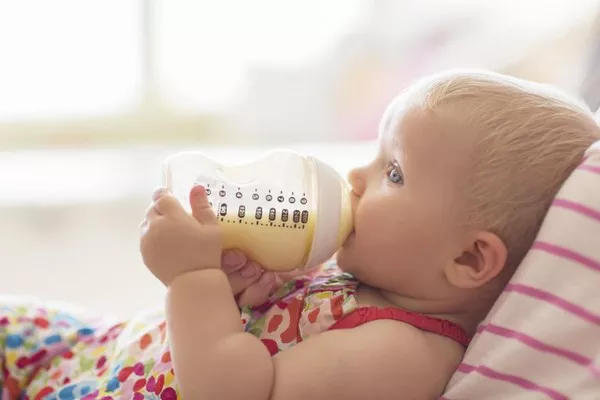Silicone bottles have gained popularity among parents as a safe and durable option for feeding their babies. However, over time, you may notice that these once pristine, transparent bottles start to develop a yellowish tint. This discoloration can be concerning, but it is a common occurrence that is often reversible or preventable. In this article, we will delve into the reasons why silicone bottles turn yellow and explore effective ways to prevent and mitigate this phenomenon, ensuring the longevity and visual appeal of your baby’s feeding equipment.
-
Oxidation:
One of the primary reasons for silicone bottles turning yellow is oxidation. When exposed to air, silicone undergoes a natural chemical reaction known as oxidation. Oxygen molecules interact with the silicone polymers, leading to a breakdown of its molecular structure. This breakdown causes the silicone to gradually lose its clarity and develop a yellow hue. Oxidation is a slow and ongoing process that can be accelerated by factors such as heat, UV exposure, and prolonged use.
-
Exposure to Heat:
Exposing silicone bottles to high temperatures can speed up the oxidation process and contribute to yellowing. Sterilizing bottles using boiling water or placing them in dishwashers set to high heat can cause the silicone to discolor over time. Heat exposure can cause the silicone to undergo faster chemical reactions, leading to the breakdown of its structure and the development of a yellow tint.
-
Staining from Food:
Certain foods, especially those with strong pigments, can stain silicone bottles and contribute to yellowing. Foods like carrots, tomatoes, and turmeric can leave behind residue that adheres to the silicone surface. Over time, this residue can accumulate and cause discoloration. It is important to clean silicone bottles thoroughly after each use to remove any potential staining agents and prevent long-term discoloration.
-
Exposure to Sunlight:
UV radiation from sunlight can accelerate the oxidation process and lead to yellowing of silicone bottles. If you frequently leave your baby’s bottles exposed to direct sunlight or store them in a location with excessive UV exposure, the silicone material may be more susceptible to discoloration. It is advisable to store silicone bottles in a cool, shaded area to minimize UV exposure and reduce the risk of yellowing.
-
Improper Cleaning and Maintenance:
Inadequate cleaning and maintenance practices can also contribute to silicone bottle discoloration. Failure to thoroughly clean bottles, leaving behind residual milk or formula, can lead to staining and yellowing. Additionally, using harsh cleaning agents or abrasive brushes can damage the silicone surface, making it more prone to oxidation and discoloration. It is recommended to follow the manufacturer’s instructions for cleaning and use gentle, non-abrasive cleaning methods to maintain the integrity of the silicone.
Prevention and Maintenance Tips:
While silicone bottles may naturally develop a yellow hue over time, there are several preventive measures and maintenance tips that can help minimize or delay the yellowing process:
- Gentle Cleaning:
Clean silicone bottles promptly after each use using warm water and mild dish soap. Avoid using abrasive scrubbers or cleaning agents that may damage the silicone surface.
- Stain Removal:
For stubborn stains, consider soaking the bottle in a mixture of baking soda and water or using a vinegar solution. Always rinse thoroughly afterward.
- Proper Storage:
Store silicone bottles in a cool, shaded area away from direct sunlight to minimize UV exposure.
- Sterilization:
When sterilizing silicone bottles, use methods that don’t involve excessive heat, such as steam sterilizers or microwave steam bags designed for baby bottles.
- Avoid Staining Foods:
Be cautious with feeding foods that have strong pigments and can potentially stain the silicone. If using such foods, ensure thorough cleaning afterward.
- Regular Inspection and Replacement:
Regularly inspect your silicone bottles for signs of discoloration and wear. If you notice significant yellowing or any damage to the silicone material, it may be time to consider replacing the bottles. This is especially important if the yellowing is affecting the transparency of the bottle or if there are any concerns about hygiene or safety.
Conclusion:
The yellowing of silicone bottles is a common occurrence caused by oxidation, exposure to heat, staining from foods, and UV radiation. While it may be inevitable to some extent, you can take preventive measures to slow down the yellowing process and maintain the visual appeal of your baby’s feeding equipment. By following proper cleaning and maintenance practices, storing bottles away from direct sunlight, and being mindful of staining foods, you can minimize the discoloration and ensure the longevity of your silicone bottles. If significant yellowing or damage occurs, it is advisable to consider replacing the bottles to ensure your baby’s safety and hygienic feeding experience. Remember, always consult the manufacturer for specific care instructions and guidelines for your silicone bottles.


